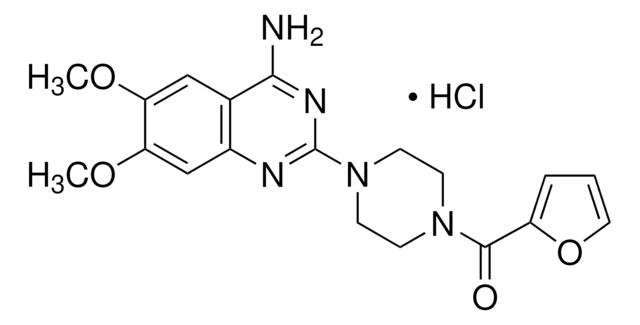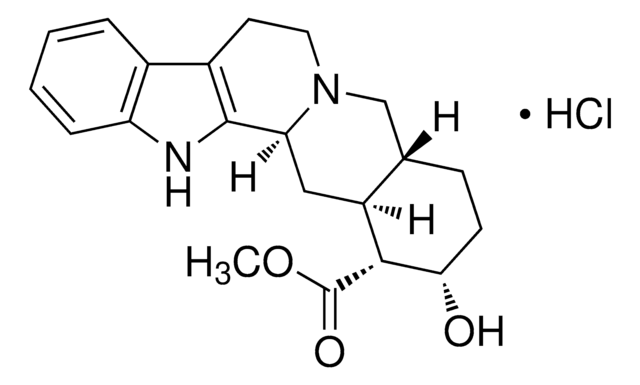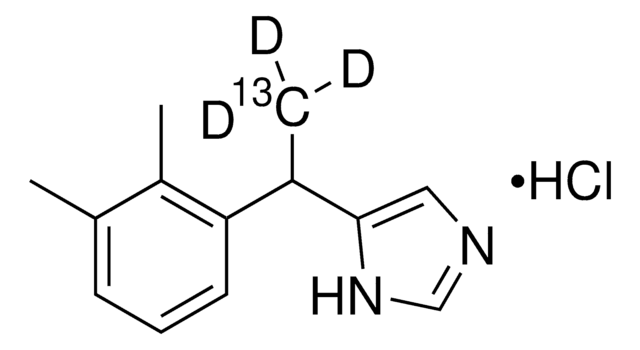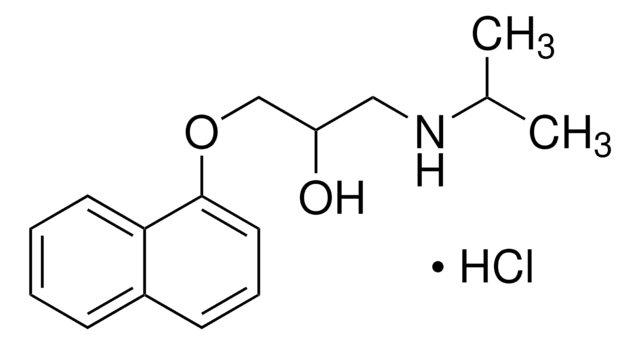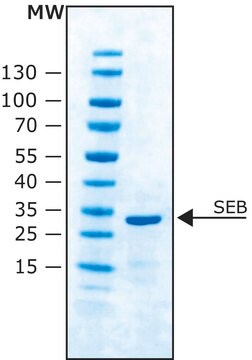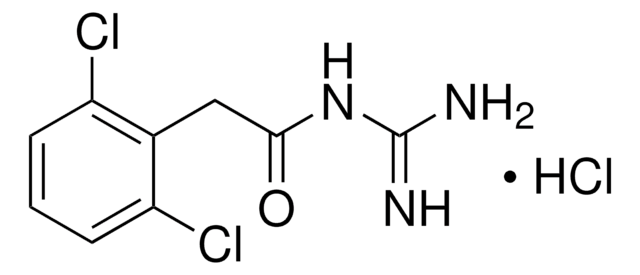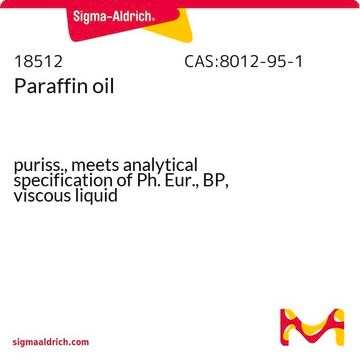A9611
Atipamezole
≥98% (HPLC)
Sinonimo/i:
4-(2-Ethyl-2,3-dihydro-1H-inden-2-yl)-1H-Imidazole, Antisedan, MPV 1248
Autenticatiper visualizzare i prezzi riservati alla tua organizzazione & contrattuali
About This Item
Formula empirica (notazione di Hill):
C14H16N2
Numero CAS:
Peso molecolare:
212.29
Numero MDL:
Codice UNSPSC:
12352200
ID PubChem:
NACRES:
NA.77
Prodotti consigliati
Livello qualitativo
Saggio
≥98% (HPLC)
Stato
powder
Colore
white to brown
Solubilità
DMSO: ≥30 mg/mL
Temperatura di conservazione
room temp
Stringa SMILE
CCC1(Cc2ccccc2C1)c3c[nH]cn3
InChI
1S/C14H16N2/c1-2-14(13-9-15-10-16-13)7-11-5-3-4-6-12(11)8-14/h3-6,9-10H,2,7-8H2,1H3,(H,15,16)
HSWPZIDYAHLZDD-UHFFFAOYSA-N
Descrizione generale
Atipamezole has an imidazole structure and gets localized in the central nervous system on administration.
Applicazioni
Atipamezole has been used as a α2-adrenoceptor antagonist in mesencephalic trigeminal nucleus (MTN) neurons, CD4+ T-lymphocyte and human embryonic kidney (HEK293) membrane preparation.
Azioni biochim/fisiol
Atipamezole elicits affinity towards adrenoreceptor subtypes namely α2A, α2B and α2C. High levels of atipamezole impairs cognitive functions. It also reverses the adrenoreceptor agonist functionalities. Atipamezole shows no affinity towards muscarinic and dopamine or neurotransmitter receptors. Atipamezole when used along with morphine elicits antinociceptive effects.
Atipamezole is a selective α2 adrenergic blocker. Atipamezole is more potent than yohimbine; it is very selective for α2 adrenergic vs α1 sites, but not selelctive for α2 subtypes.
Caratteristiche e vantaggi
This compound is a featured product for Neuroscience research. Click here to discover more featured Neuroscience products. Learn more about bioactive small molecules for other areas of research at sigma.com/discover-bsm.
This compound is featured on the α2-Adrenoceptors page of the Handbook of Receptor Classification and Signal Transduction. To browse other handbook pages, click here.
Codice della classe di stoccaggio
11 - Combustible Solids
Classe di pericolosità dell'acqua (WGK)
WGK 3
Punto d’infiammabilità (°F)
Not applicable
Punto d’infiammabilità (°C)
Not applicable
Scegli una delle versioni più recenti:
Possiedi già questo prodotto?
I documenti relativi ai prodotti acquistati recentemente sono disponibili nell’Archivio dei documenti.
Tuomas O Lilius et al.
Anesthesia and analgesia, 114(6), 1353-1358 (2012-05-05)
Opioid analgesics are effective in the treatment of chronic pain, but they have serious adverse effects such as development of tolerance and dependence. Adrenergic α(2) agonists and μ-opioid receptor agonists show synergistic potentiation and cross-tolerance in spinal analgesia, whereas α(2)-adrenergic
D Van Vynckt et al.
The Journal of small animal practice, 52(12), 638-644 (2011-10-25)
To assess the influence of two sedation protocols on the degree of lameness in dogs. Fifty lame dogs were allocated to one of two sedation protocols. Group ACPM (acepromazine + methadone; n=25) was sedated with acepromazine and methadone. Group MED
Hong Wei et al.
Basic & clinical pharmacology & toxicology, 112(2), 90-95 (2012-08-21)
Pontine A5, A6 (locus coeruleus) and A7 cell groups provide noradrenergic innervation of the spinal cord. Here, we assessed whether activation of α(2) -adrenoceptors in A7 influences peripheral nerve injury-induced hypersensitivity in the rat, and whether spinal α(2) -adrenoceptors mediate
Michele Barletta et al.
Journal of the American Veterinary Medical Association, 238(9), 1159-1167 (2011-05-03)
To compare efficacy and cardiorespiratory effects of dexmedetomidine and ketamine in combination with butorphanol, hydromorphone, or buprenorphine (with or without reversal by atipamezole) in dogs undergoing castration. Prospective, randomized, split-plot, blinded study. 30 healthy client-owned sexually intact male dogs. Dogs
Andrew P Woolnough et al.
Journal of wildlife diseases, 48(2), 435-443 (2012-04-12)
The Judas technique is a method used for landscape control of feral donkeys (Equus asinus) in northern Australia. Central to the success of any Judas program is the safe, efficient, and humane attachment of the telemetry device. For feral donkeys
Articoli
α2-Adrenoceptors
Il team dei nostri ricercatori vanta grande esperienza in tutte le aree della ricerca quali Life Science, scienza dei materiali, sintesi chimica, cromatografia, discipline analitiche, ecc..
Contatta l'Assistenza Tecnica.

